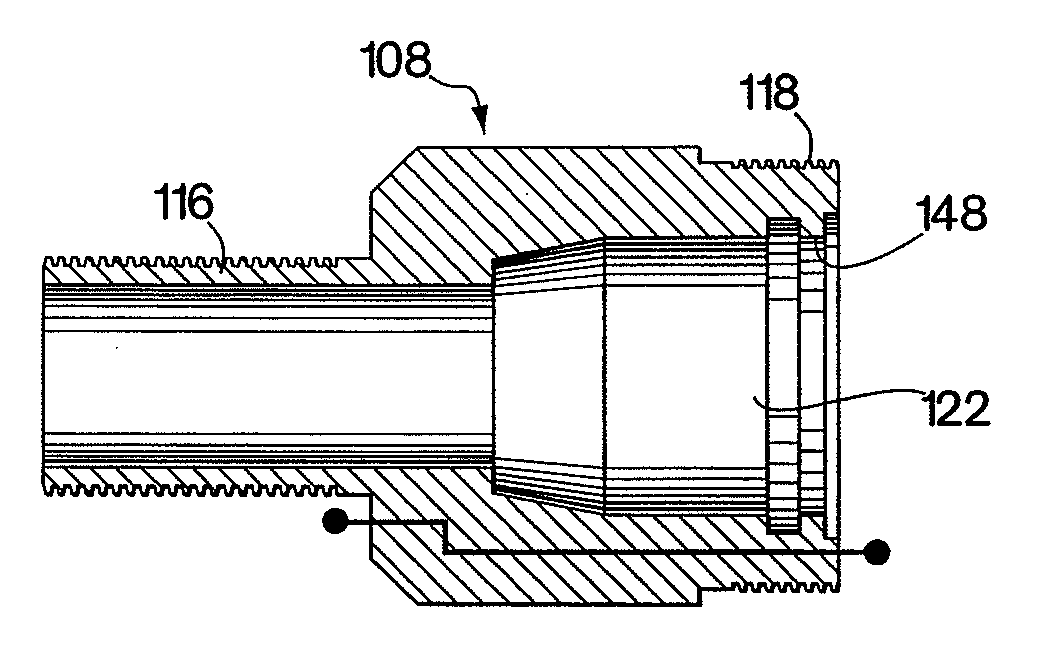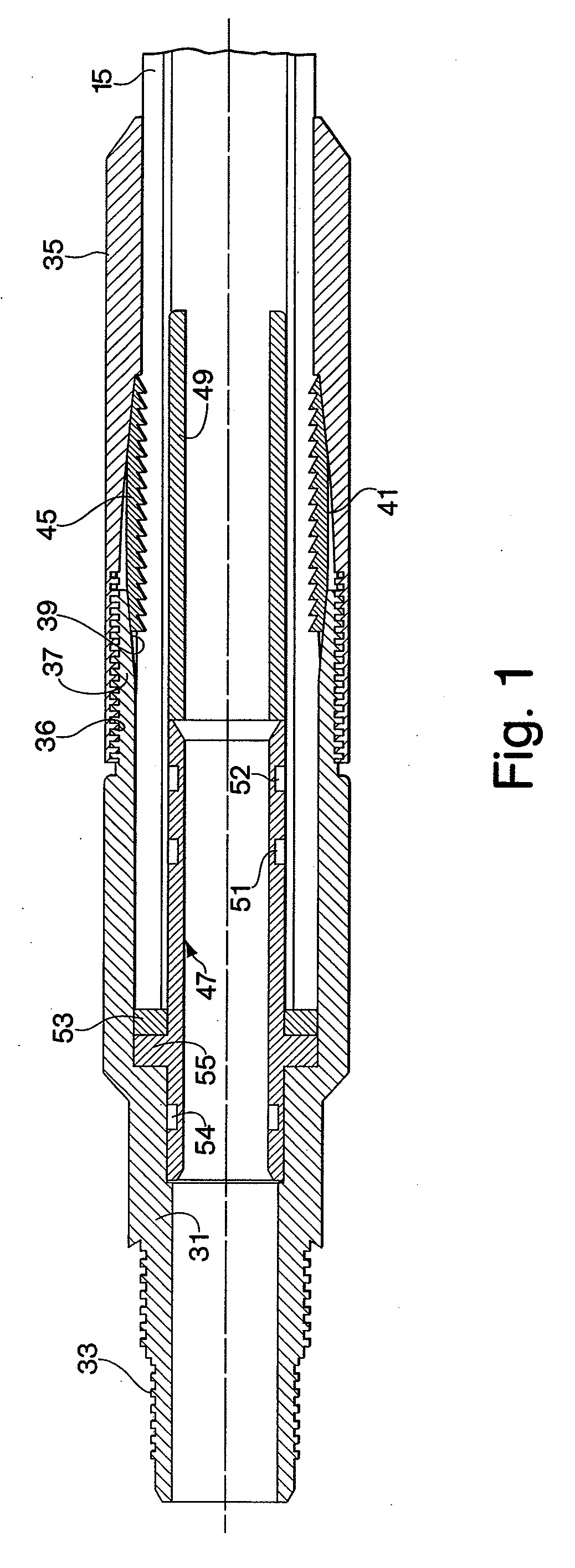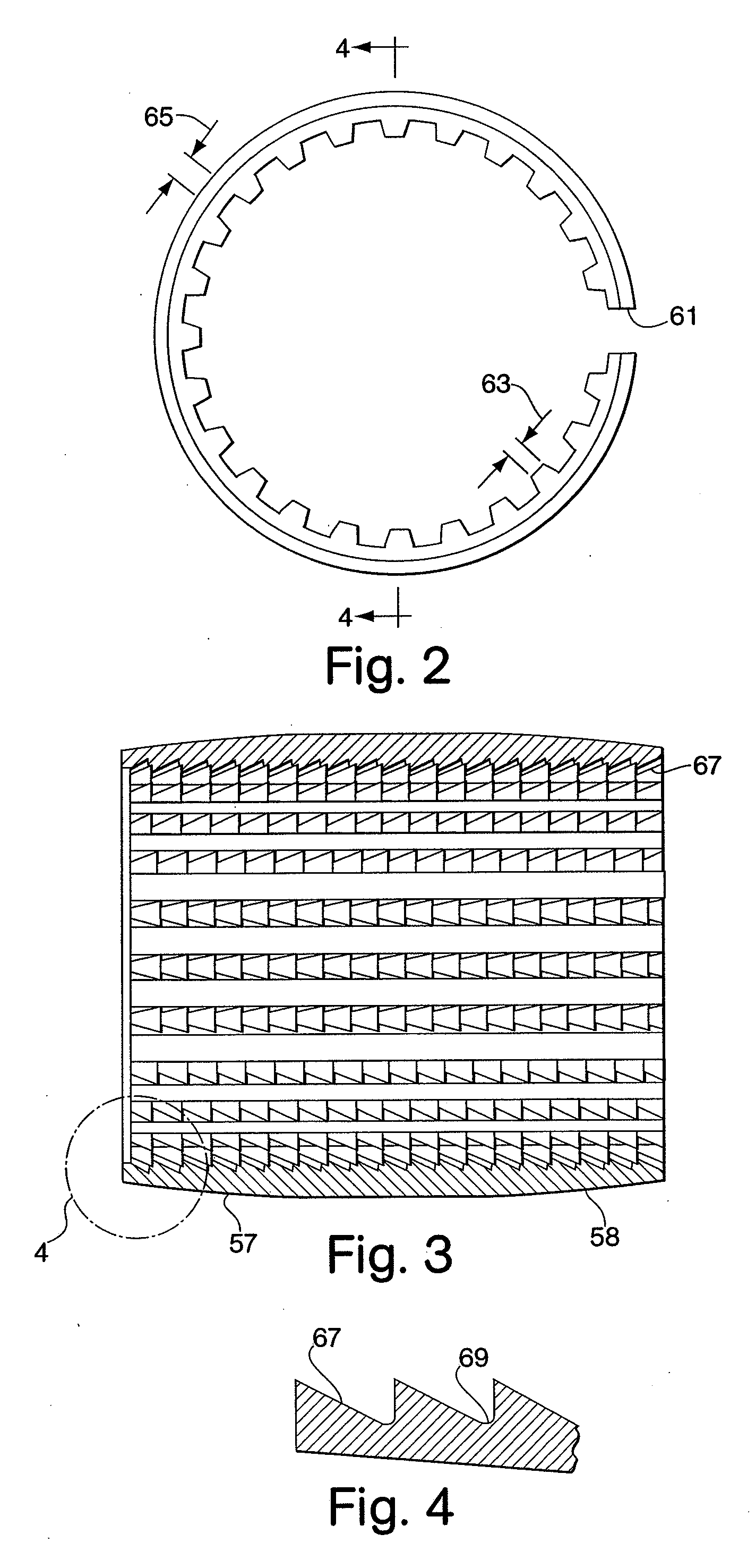Composite coiled tubing end connector
a technology of coiled tubing and end connector, which is applied in the direction of hose connection, drilling pipe, mechanical equipment, etc., can solve the problems of steel coiled tubing suddenly fracture and fail, risk to personnel, and damage to the coiled tubing, so as to resist deformation of the pipes, enhance the fluid seal, and inhibit the delamination of the layers
- Summary
- Abstract
- Description
- Claims
- Application Information
AI Technical Summary
Benefits of technology
Problems solved by technology
Method used
Image
Examples
Embodiment Construction
[0075]While this invention is directed generally to providing connectors for composite spoolable pipe, the disclosure is directed to a specific application involving line pipe, coiled tubing service and downhole uses of coiled tubing. Composite coiled tubing offers the potential to exceed the performance limitations of isotropic metals, thereby increasing the service life of the pipe and extending operational parameters. Composite coiled tubing is constructed as a continuous tube fabricated generally from non-metallic materials to provide high body strength and wear resistance. This tubing can be tailored to exhibit unique characteristics which optimally address burst and collapse pressures, pull and compression loads, as well as high strains imposed by bending. This enabling capability expands the performance parameters beyond the physical limitations of steel or alternative isotropic material tubulars. In addition, the fibers and resins used in composite coiled tubing construction...
PUM
| Property | Measurement | Unit |
|---|---|---|
| internal pressures | aaaaa | aaaaa |
| external pressures | aaaaa | aaaaa |
| frictional forces | aaaaa | aaaaa |
Abstract
Description
Claims
Application Information
 Login to View More
Login to View More - R&D
- Intellectual Property
- Life Sciences
- Materials
- Tech Scout
- Unparalleled Data Quality
- Higher Quality Content
- 60% Fewer Hallucinations
Browse by: Latest US Patents, China's latest patents, Technical Efficacy Thesaurus, Application Domain, Technology Topic, Popular Technical Reports.
© 2025 PatSnap. All rights reserved.Legal|Privacy policy|Modern Slavery Act Transparency Statement|Sitemap|About US| Contact US: help@patsnap.com



